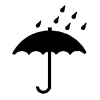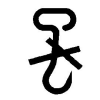| Textiles, fabrics, cloth | [German version] |
Table of contents |
|
| General: | ||
| Product information | ||
| Packaging | ||
| Transport | ||
| Container transport | ||
| Cargo securing | ||
Product information
Product name
| German | Textilien, Stoffe, Gewebe |
| English | Textiles, fabrics, cloth |
| French | Textiles, tissus, étoffes |
| Spanish | Textiles, tejidos, telas |
| CN/HS number * | from 50 ff. to 70 ff. |
(* EU Combined Nomenclature/Harmonized System)
Product description
Textiles or textile goods are semifinished and finished products made from fabrics and cloth , fabrics and cloth being textile products made from yarn generally arranged in two directions: warp yarns, which run lengthwise, and weft yarns, which run crosswise. Fabrics or textiles are named for the yarns used to make them, e.g. cotton, woolen, silk, linen, hemp, jute fabrics. They display more or less the same characteristics as the constituent fibers of the yarns which are used to make the textiles.
For the aspects of transport risk assessment of interest here, this term is understood to cover goods of fibrous material in the various stages of processing. A distinction must be drawn between:
| textiles/fabrics – general | |
| industrial textiles/fabrics |
Industrial textiles and fabrics include not only fabrics used in industry but also special protective clothing and uniform.
Textiles and fabrics may consist of natural fibers of either animal or vegetable origin, such as cellulose/viscose, or of manmade fibers, such as polyamides, or of mixtures of these materials.
As far as processing stages are concerned, a rough distinction may be drawn between:
| semi-manufactured articles | |
| finished articles (finished products) |
Textiles and fabrics should be treated as valuable cargo.
Quality / Duration of storage
Extended exposure to light puts natural and manmade fibers at risk due to photomechanical degradation processes; natural silk, polyamide fibers, jute and ramie are particularly sensitive.
Intended use
Fabrics/cloth (generally in the form of yard goods) are further processed to produce textile products or ready-made garments.
Textiles are classified as follows, according to their intended use:
| textiles for clothing purposes, ready-made garments | |
| household, table and bed linen, towels | |
| home textiles and furnishing fabrics, curtains | |
| industrial textiles | |
| medical textiles | |
| sanitary textiles |
Flat woven products constitute the biggest group.
Countries of origin
Product flow is generally as follows:
| textiles/fabrics in general: East Asian states to Europe, within the EU depending on wage differentials | |
| industrial textiles/fabrics: exchange between virtually all states |
Back to beginning
Packaging
Packaging varies depending on processing stage. Thus, for example, these goods are packaged in bales, boxes or cartons, which are sometimes secured with metal strapping.
Yard goods are wound on cores and sometimes packaged in cartons.
The goods undergo thorough checks before being packaged in dry, ventilated rooms. They must not be exposed to intense solar radiation.
| Marking of packages | ||
 Keep dry |
 Use no hooks |
 Keep away from heat (solar radiation) |
Back to beginning
Transport
Symbols
 General cargo |
Means of transport
Ship, truck, railroad, aircraft
Container transport
Transport in standard containers , subject to compliance with lower limits for water content of goods, packaging and flooring.
Cargo handling
In damp weather (rain, snow), the cargo must be protected from moisture, since the goods are strongly hygroscopic and readily absorb moisture. No hooks of any kind should be used, since they may very easily cause damage.
Take care not to load individual items to an inadmissible degree.
Stowage factor
| 1.14 – 6.50 m³/t (bales) [1] | |
| 1.51 – 7.44 m³/t (boxes) [1] | |
| 3.30 – 4.25 m³/t (cartons) [1] |
Stowage space requirements
The holds/containers must be dry and clean. The stowage space must be away from heat sources. In particular, holds must be free of oily patches. The ship’s pipework must be leak-proof.
Segregation
Fiber rope/thin fiber nets, slip or label bearing product data and/or bar code.
Cargo securing
The cargo must be stowed in such a way that the bales, boxes or cartons do not slip and become damaged during transport. Sharp-edged steel components must be covered with wooden dunnage, while the stack pressure is absorbed by dense intermediate layers of wooden dunnage.
Back to beginning
Risk factors and loss prevention
RF Temperature
Textiles and fabrics require particular temperature, humidity/moisture and possibly ventilation conditions (SC VI) (storage climate conditions) .
Favorable travel temperature range: 0 – 30°C [1]
Optimum travel temperature: 20°C ± 5°C [1]
Excessively high temperatures result from solar radiation, for example, or from stowage too close to heat sources (heated tanks etc.); they cause creases and shrinkage.
At temperatures > 30°C and humidities > 30%, wool and natural silk are at risk of brittleness.
At high temperatures and high humidities, viscose material is at particular risk of creasing.
With PVC fibers, there is a risk of shrinkage and hardening at high temperatures.
Excessively low temperatures result in loss of strength.
Back to beginning
RF Humidity/Moisture
The cargo requires particular temperature, humidity/moisture and possibly ventilation conditions (SC VI) (storage climate conditions) .
| Designation | Humidity/water content | Source |
| Relative humidity | 65 – 70% | [1] |
| Water content | 7.85 – 8.50% (cotton fabric) | [1] |
| Maximum equilibrium moisture content | 70% | [1] |
Textiles and fabrics are hygroscopic (hygroscopicity). Moisture absorbed from the surrounding environment or present at the time of packaging (also seawater, rain, condensation water) results in mildew-staining, mold growth, mustiness and even decomposition. Metal strapping may corrode and damage the textiles or fabrics by rust staining.
With industrial fabrics there is the additional risk that fungi may cause mold- and mildew-staining, thereby leading to decomposition of the material.
Back to beginning
RF Ventilation
The cargo requires particular temperature, humidity/moisture and possibly ventilation conditions (SC VI) (storage climate conditions) .
Recommended ventilation conditions: air exchange rate: 6 changes/hour (airing), if the dew point of the external air is lower than the dew point of the hold air.
Back to beginning
RF Biotic activity
This risk factor has no significant influence on the transport of this product.
Back to beginning
RF Gases
This risk factor has no significant influence on the transport of this product.
Back to beginning
RF Self-heating / Spontaneous combustion
The goods are liable to catch fire. All smoking is prohibited. It is recommended that CO2 be used to extinguish fires.
Back to beginning
RF Odor
| Active behavior | Textiles and fabrics are generally treated with impregnating and finishing agents, for which reason they should not be stowed together with odor-sensitive goods. |
| Passive behavior | Textiles and fabrics are highly sensitive to foreign odors. |
Back to beginning
RF Contamination
| Active behavior | Textiles and fabrics are a very clean cargo. |
| Passive behavior | Virtually all textiles and fabrics are extremely sensitive to dirt. Contamination by dust, colorants, ores, dirt, rust or due to leakage of accompanying cargo (acids, molasses, glue, fats/oils, lubricants etc.) leads to loss of utility value. Natural fibers are particularly at risk from contact with steel. Synthetic fibers are at increased risk of soiling due to electrostatic charging. |
Back to beginning
RF Mechanical influences
The strictest care must be taken to ensure that no hooks of any kind are used in stowing. The goods succumb very easily to mechanical damage, such as perforation, tearing or fraying. The bales must therefore not be stowed against sharp edges or rough surfaces in the hold/container.
Back to beginning
RF Toxicity / Hazards to health
This risk factor has no significant influence on the transport of this product.
Back to beginning
RF Shrinkage / Shortage / Theft
The goods are at risk of theft and should therefore be checked for completeness at the time of acceptance. Containers should where possible be stowed such that the doors of adjacent containers block each other, thereby preventing access to the container interior.
Back to beginning
RF Insect infestation / Diseases
The holds/containers must be pest-free, protection from rats being particularly necessary as they may cause immense damage by gnawing.
All textiles and fabrics are at risk from insects (polyester fibers less than natural fibers, however): many insects which are normally typical pests of foodstuffs and animal feed may also damage bales, especially if they seek out these materials for metamorphosis. For instance, fly larvae have been known to migrate from moist, protein-rich products to textiles for pupation. Larvae of the bacon beetle (Dermestes lardarius) have migrated from the moist environment of salted hides into the dry environment of viscose cloth bales for metamorphosis. The larvae of the tobacco beetle (Lasioderma serricorne) do not restrict themselves to tobacco leaves, but instead have been known also to destroy the packaging material made of hard sacking. Therefore, do not stow textile bales together with foodstuffs and animal feed or hides/furs.
Do not use fresh wooden dunnage, as this could be infested with horntails, which will invade textile bales. The hatching insects will chew their way through any type of textiles and fabrics.
Back to beginning
